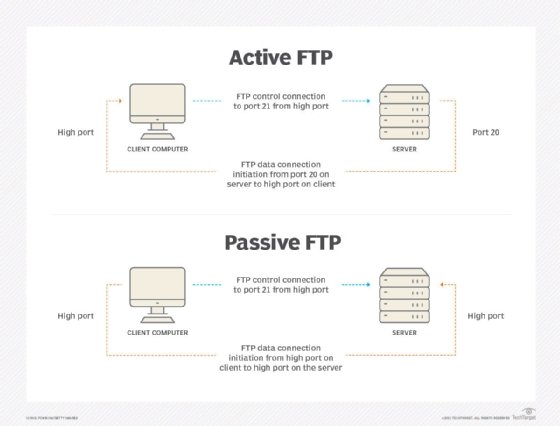File Transfer Access and Management (FTAM)
What is File Transfer Access and Management (FTAM)?
File Transfer Access and Management is an OSI application Layer 7 protocol that standardizes how files are accessed and managed in a distributed network file system. It outlines and combines standards for file transfer and remote access to open files into a single protocol.
According to the International Organization for Standardization (ISO), FTAM is defined as ISO 8571-2:1988.
What are the goals of File Transfer Access and Management?
FTAM defines the underlying architecture of the file access and management system. This system is a hierarchical virtual file storage system, and FTAM describes its file structure and attributes. It also specifies the operations that can be performed on these files and attributes.
According to the OSI networking model, the application layer is the user interface responsible for displaying received information to the user. While FTAM is an OSI Layer 7 protocol, it does not specify the actual user interface for file access, transfer and management.
FTAM describes how users can perform the following actions:
- access files locally and remotely;
- access files on machines with different kinds of file systems;
- transfer files synchronously and asynchronously;
- manage local and remote file stores; and
- manipulate files (local and remote) and their attributes.
FTAM, FTP and Gopher protocols
The FTAM, File Transfer Protocol (FTP) and Gopher protocols are similar in that all three are OSI Layer 7 protocols. However, they have their differences.
FTAM is similar to FTP in that both define standards for file copying and transfers to and from remote machines. However, since FTAM allows users to access files both locally and remotely, it is more similar to Gopher than to FTP.
Invented at the University of Minnesota, Gopher is used for the distributed storage of documents. Like FTP, Gopher accesses files remotely over a TCP/IP network. However, an FTP site exists on only one server and there can be several FTP sites. Conversely, there is only one distributed Gopher file system.
Private Gopher subnetworks do exist, but the Gopher file system is nothing more than a single collection of every Gopher server anywhere in the world. It is presented as a collection of folders, with each folder containing the following:
- subfolders;
- documents; and
- links to other Gopher servers (which are also displayed as folders).
To access a file on the Gopher file system, a user needs a Gopher client. This is a standard web browser like Google Chrome or Mozilla Firefox. The user accesses a Gopher server via a URL. When the results are displayed, the user locates the folder, document or server link they need to view or download. Some tools are available to locate documents on the global Gopher network via simple keyword searches.
Although Gopher is still available, its use -- like FTAM -- has stagnated due to the ubiquity of the World Wide Web and FTP.

Vendors can create their own file system user interfaces for FTAM, or use existing interfaces if they provide vendor-specific file systems -- they can't do this for Gopher and FTP. Additionally, some FTAM products are available for specific operating systems like Microsoft Windows NT.
What are FTAM uses and applications?
FTAM has been around for a few decades. However, it is not as popular as FTP or TCP/IP, mainly due to its complexity. Another reason for its decline are concerns about its Performance. Despite its rich functionality and reliability, it has lower throughput compared to non-OSI implementations.
That's not all. There are other concerns about FTAM.
While binary file transfers are more efficient with FTAM than ASCII file transfers, read operations are not as efficient as write operations, and there is significant performance overhead. To reduce the impact of these issues, the best use of FTAM is for large messages and for multiple read/write operations in a single connection.
In the past, the German banking sector used FTAM to transfer clearing information. In 1995, Germany enacted the Banking Communication Standard over FTAM (BCS-FTAM) access transmission protocol as part of the DFÜ-Abkommen (EDI agreement).
In 2010, the Electronic Banking Internet Communication Standard (EBICS) replaced BCS-FTAM as the accepted standard for interbank payment information transmission over the internet. EBICS is now mandated for use by all German banks, as well as banks in Switzerland and France.
Germany stopped supporting BCS-FTAM in December 2010.






